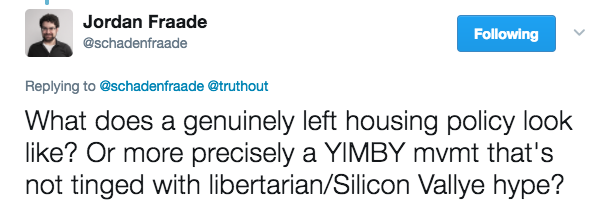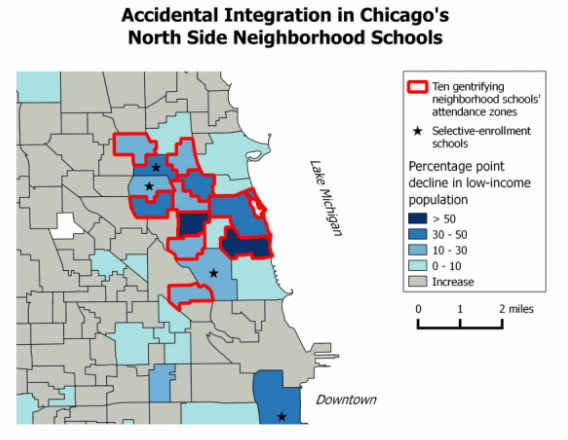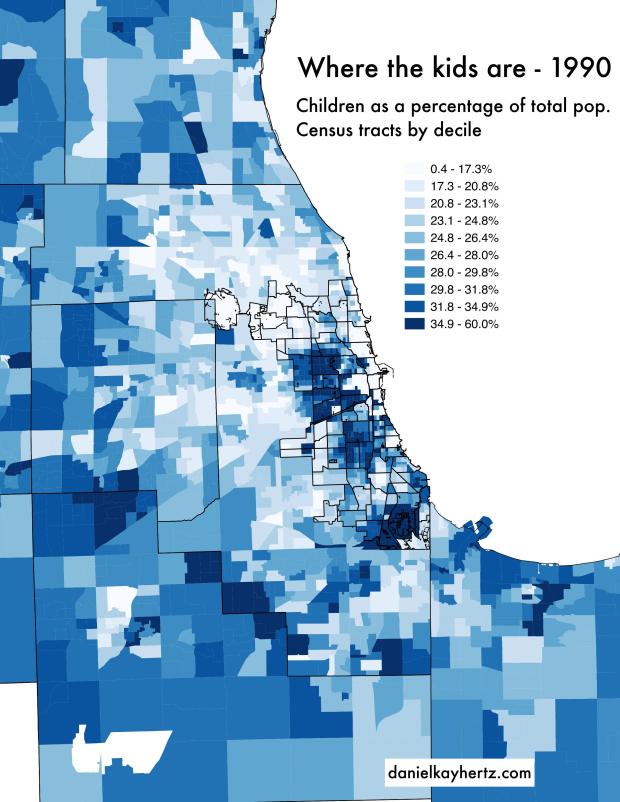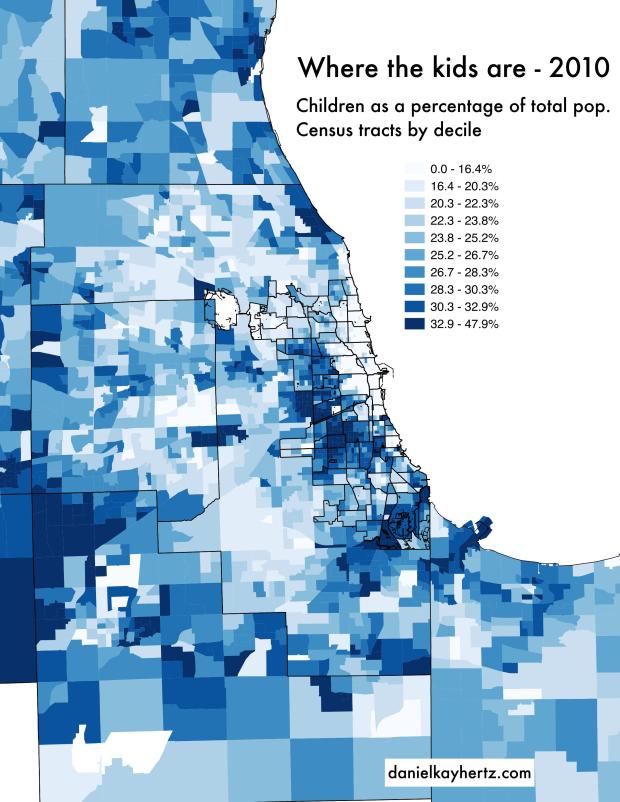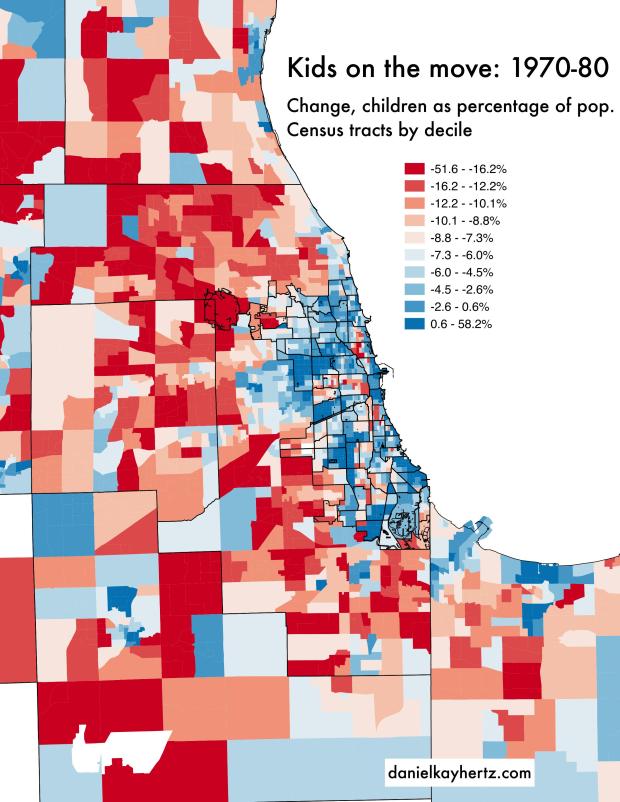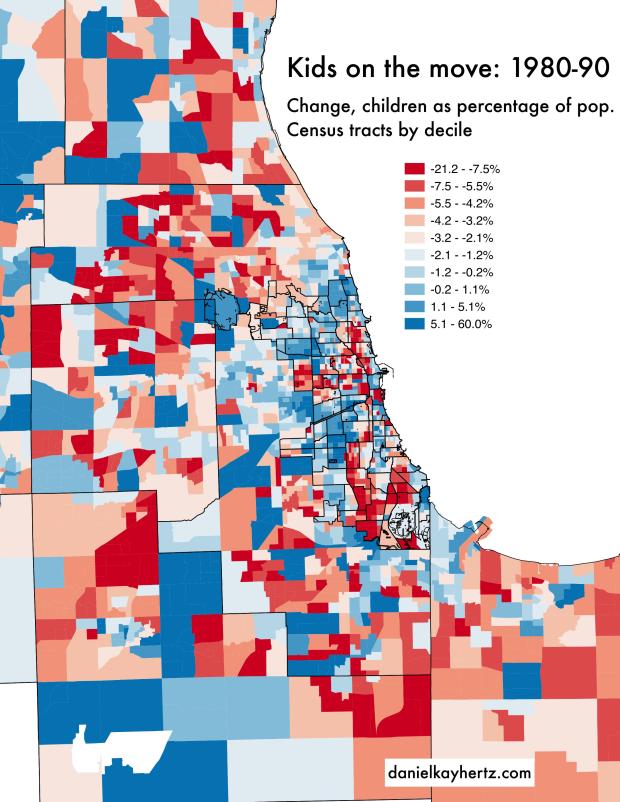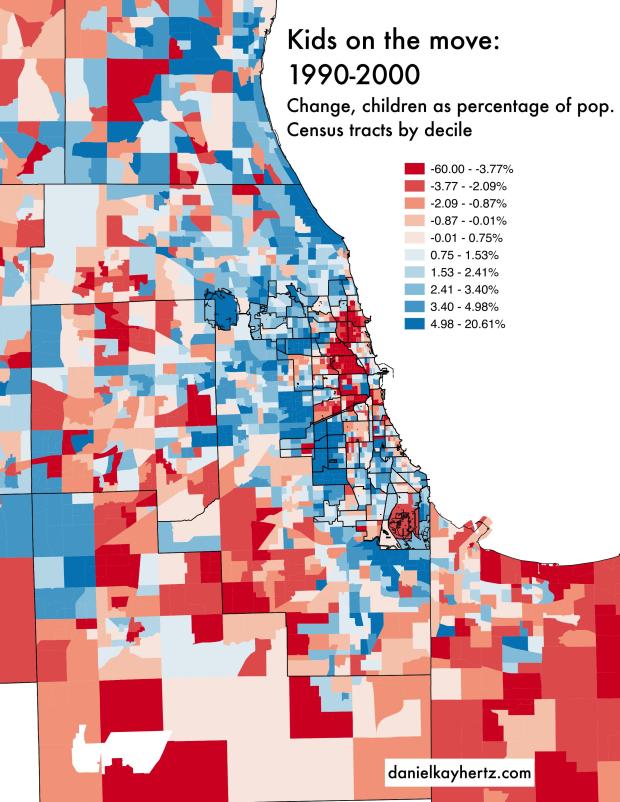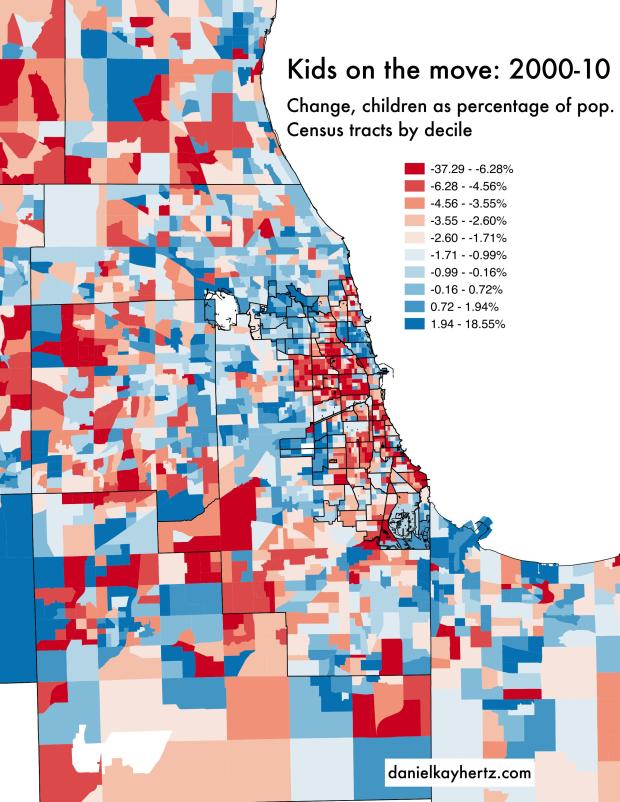I co-wrote this post with Amanda Kass, and it is cross-posted at her blog.
Tax increment financing–or TIF–made the news this summer with the release of a report by Cook County Clerk David Orr. The Tribune covered the report with the headline “Nearly a third of city property tax collections diverted into special taxing districts.”
But do TIF districts really “divert” hundreds of millions of property tax dollars that would otherwise go to the city or its schools? The short answer: mostly not. But to understand why not, and why “mostly,” you’ve got to understand how TIF and property taxes both work.
This post is a short tour of that world. (There’s some additional, optional reading at the end if you can’t get enough.) The aim isn’t to provide technical knowledge of a complex economic development program, but to help Chicagoans to participate in the debate over how their city funds basic services, and what kind of process is used to make those decisions.
How Do Property Taxes Work?
Before diving into TIF, a brief explanation of how property taxes work is needed. A caveat though: this is an overview of how one part of the property tax process works generally, and not necessarily how homeowners experience it. For example, we’re leaving out a lot of important aspects like the assessment and appeals processes. In real life there are also many overlapping taxing districts, but we’re discussing things in terms of a singular government.
For the purposes of this post, the first thing to understand is that property taxes don’t work like income or sales taxes. With a sales tax, a government sets the tax rate, and then apply the rate to whatever you buy, and that determines how much revenue it gets.
But property taxes go the other way: First, the local government determines how much revenue it will receive.* This amount is called the “levy.”Then it works backwards to figure out what tax rate it needs to get that amount of revenue, given the total value of the properties it can tax.** As you’ll see, this “backwards” way of setting the rate (and some added complications) is really important when a TIF is created.
(If you want more details check out the Notes at the bottom of this post.)***
How Does TIF Impact Property Taxes?
Tax increment financing is meant to be an economic development tool. When a city creates a TIF district, it caps the amount of property value in the district that can be taxed through the regular property tax process. The property value at the time a TIF district is created is known as the “base value.” After the district is created, any growth in property values above the base (be it for existing properties or new construction) is called the “increment.”
Now, remember how property taxes work: a government chooses the amount of revenue it will collect, then divides that by the total amount of property value it can tax to calculate the tax rate. The wrinkle is that while only the base value is used to determine the tax rate, the government then applies the rate to both the base value as well as to the increment values. Tax revenue from the base value goes to the government’s regular budget, while taxes from the increment goes to separate TIF accounts.
So what does TIF mean for a government? In general, TIFs won’t change how much revenue a government receives because governments set the levy (how much revenue they will receive), and the rate is automatically adjusted to generate the levy amount. Incremental property value is not part of a government’s taxable base—meaning the government needs to apply a higher rate to get the same levy amount from the smaller taxable property value available to it. Because of this TIF districts generally end up increasing the property tax rate even for people who don’t live in a TIF. And because the property tax rate is applied to both the base value for the levy and then also applied to the increment, TIFs cause more total property taxes to be collected than if the TIFs didn’t exist. Because of this TIFs function somewhat like a tax rate hike.
Do TIFs Siphon Money Away from the City and Schools?
At the beginning of this post, we said the short answer was “mostly not,” and now you can see why. Property taxes begin with the levy—the total amount of revenue a government wants to raise—and work backwards from there to set the rate. That means that when a TIF district limits the total amount of property value that local governments can tap for their levy, the tax rates end up being higher than they otherwise would be so local governments get the same amount of money. Then that higher rate is also applied to the “increment” property values in TIF districts, with the resulting tax revenue going to the TIF account.
The bottom line: For the most part, TIFs increase the total amount of property taxes paid, rather than diverting them from regular budgets into special funds.
We say “for the most part,” though, because for Chicago Public Schools (CPS), TIFs do divert some funds from the regular budget to special funds.
That’s because unlike the City of Chicago—which can set its property tax levy at whatever amount it wants—CPS is constrained by Illinois’ Property Tax Extension Limitation Law (PTELL). In general, PTELL limits the amount CPS can increase its levy by the lesser of 5% or inflation (CPI).
But there’s a loophole: new construction is not subject to the PTELL cap, and thus a boom in new construction can generate increased revenue for CPS. But TIF districts can get in the way of that loophole by capturing the property values of new construction in their increments, and holding them off-limits to CPS. So if TIF were to end tomorrow, CPS could increase its property tax levy beyond the current PTELL maximum thanks to the value of new construction.
But PTELL adds another wrinkle, too. When a TIF district expires, incremental value belonging to existing structures is not subject to the PTELL cap, either. Unlike new construction properties, which CPS would have been able to tax above the PTELL maximum the whole time if not for the TIF, increment value from existing buildings becomes a “bonus” only if it is part of an expiring TIF district. In other words, though TIF districts can reduce CPS’ property tax levy while they exist, once they expire, CPS might be able to receive more property tax revenue than if the TIF had never existed.
What’s the net impact of all of these factors? That is very difficult to quantify, for several reasons. One wrinkle is that some TIF funds have been used to pay for school infrastructure projects–ranging from building new schools to projects necessary for schools to be compliant with the Americans with Disabilities Act (see also pages 144-146 in CPS’ latest financial report). Another is that in addition to the property tax, CPS is funded by state aid, and to some extent the amount of that aid depends on the size of CPS’ property tax base. The larger the base, the less state aid.
Last, it’s also possible that new construction and increases in property values wouldn’t have taken place without TIF, and thus CPS wouldn’t have that property wealth to tax. Whether TIF is an effective economic tool is debatable, and the academic research on this question has produced mixed answers. We’re not wading into the effectiveness (or merits) of TIF in this piece, and if you want to learn more about that topic see our suggested reading list.
Suggested Reading
University of Illinois at Chicago Professors David Merriman and Rachel Weber have both extensively studied this topic, and their CVs each highlight their numerous TIF related publications. We’re linking to some of their readily available TIF publications here (as well as some other items), but this is not an exhaustive list of their work–most importantly, we’re not linking to their academic articles because those aren’t readily accessible.
- Tax Increment Financing: Process and Planning Issues by Rachel Weber and Laura Goddeeris (published by the Lincoln Institute of Land Policy, 2007).
- Do Tax Increment Finance Districts Stimulate Growth in Real Estate Values? By David Merriman, Mark Skidmore, and Russell Kashian (Revised, September 2011).
- Mayor Rahm Emanuel’s TIF Task Force Final Report (published August 2011; Dr. Weber served on the task force).
- Collateral damage in Chicago’s TIF argument: Schools by Rachel Weber (published by Crain’s Chicago Business, March 2015).
- Democratizing Tax Increment Financing Funds through Participatory Budgeting by Cecile Carroll, Thea Crum, Carolina Gaete, Maria Hadden, and Rachel Weber (June 2016).
- Illinois’ TIF Reform Task Force Final Report (published June 2018).
- Improving Tax Increment Financing (TIF) for Economic Development by David Merriman (published by the Lincoln Institute of Land Policy, September 2018).
- This report includes a summary of 31 empirical studies of TIF, and has an extensive bibliography.
Notes:
* The amount of money taxing districts can get from the property tax may be limited by the Property Tax Extension Limitation Law and/or tax rate limitations. Last, taxing districts’ aggregate levy is made up of specific levy line-items, and different restrictions apply to different line-items.
** The are multiple public entities involved in the property tax process. Taxing districts set their levies, but the County Assessor and Clerk (which are separate offices) play important roles in determining property values and any applicable limitations to the amount of property taxes a taxing district can levy. Last, actual tax collection is done by the County Treasurer.
***A first complexity of the property tax system has to do with property values. A homeowner’s tax bill is based on its assessed value, equalization factor, and any applicable exemptions. The Cook County Assessor’s office is in charge of determining property values. The main point is that there are a bunch of steps between a property’s market value and the property value that’s ultimately subject to taxation.
There are also a lot of taxing districts in Cook County (school districts, townships, cities, mosquito abatement districts, special service areas, etc), and each one sets its own levy. The impact of all these different taxing districts and their different boundaries means that two identically valued homes that are in close proximity to each other may have different tax bills.
Once the levy and property values are both set, the Cook County Clerk’s office determines the rate. Tax bills are then sent out, and subsequently paid in two installments.The Cook County Clerk’s office has a nice graphic explaining this process.
Again, the big thing to know about property taxes is that the tax rate is a function of the levy and property values. The general formula for property taxes is as follows:
Levy/Total EAV = Rate
So if the total EAV in a given jurisdiction was a million dollars and the local government wanted $1,000 the property tax rate would be 0.1%. If total property value was less than a million dollars then the tax rate would be higher, and vice-versa. If an individual’s home had an EAV of $50,000, his/her property tax bill would be $50 (0.1% * $50,000).














